Open reduction; bridge plating
1. Introduction
General considerations
Plating is the standard technique for treating forearm fractures in adults and is therefore best considered for skeletally mature or nearly mature children.
Children with open physes have thick active periosteum favoring stability and rapid healing with the ESIN method. Where such techniques are unavailable plating may be used in younger children.
If technically possible, ESIN is biologically favored. If plating is used, soft-tissue and periosteal stripping of the bone should be minimized.
Plating of multifragmentary forearm shaft fractures
Plating of pediatric forearm shaft fractures follows the technique for plate fixation in adults.
For multifragmentary forearm shaft fractures, bridge plating may be applied. This results in relative fracture stability.
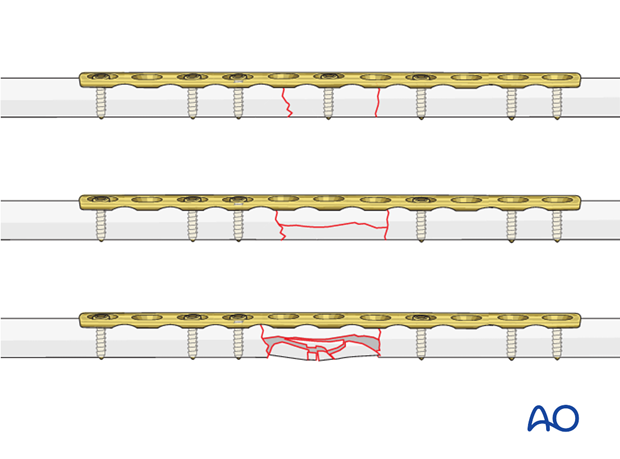
2. Principles
Instruments and implants
A small fragment set consists of:
- 2.7 or 3.5 mm plates and screws
- Power driver
- 2.7 or 3.5 mm insertion set
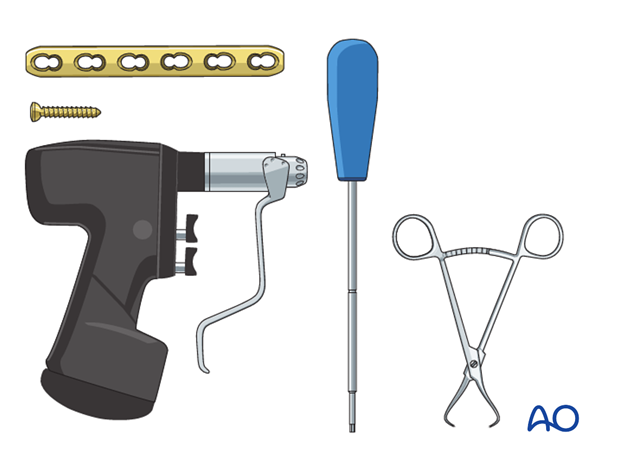
Choice of implant
The requirements for internal fixation of complex multifragmentary forearm fractures include:
- The plate should span any comminuted zone and provide at least a three-hole segment over each main fragment, with at least two bicortical screws in each main fragment.
- Well-spaced screws to distribute the stresses on the bone-implant composite for each main fragment
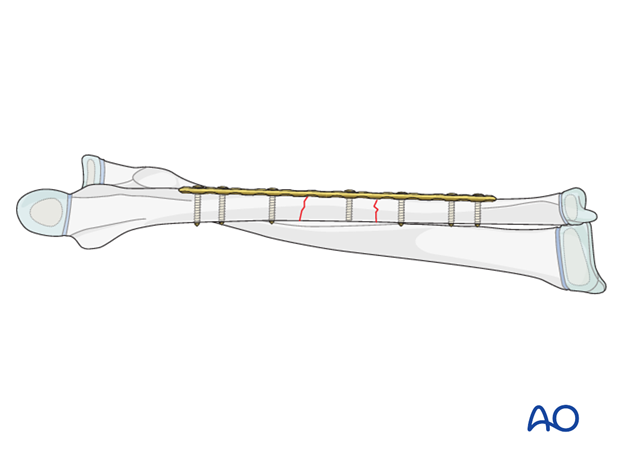
Plate position
The ulnar plate can be positioned under the extensor carpi ulnaris (A), under the flexor carpi ulnaris (B), or in the interval between extensor and flexor carpi ulnaris (C).
With a more proximal fracture it can be more difficult to place the plate underneath the extensor muscle.
With more distal fractures, plates should be placed in the interval between the extensor and flexor carpi ulnaris (C).
Plating the tensile (subcutaneous) aspect of the ulna (C) is biomechanically preferable, but plate prominence can be a cause irritation.
Plates in positions A or B are covered by the muscle compartment and avoids this complication.
In the following procedure, the plate positioned on the subcutaneous border of the ulna (C) is illustrated.

Approach
The ulna is exposed by the direct approach between the flexor and extensor muscle compartments.
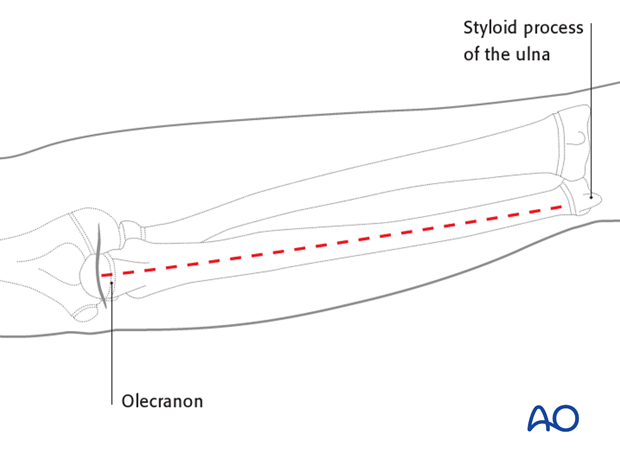
3. Patient preparation
This procedure is normally performed with the patient in a supine position.
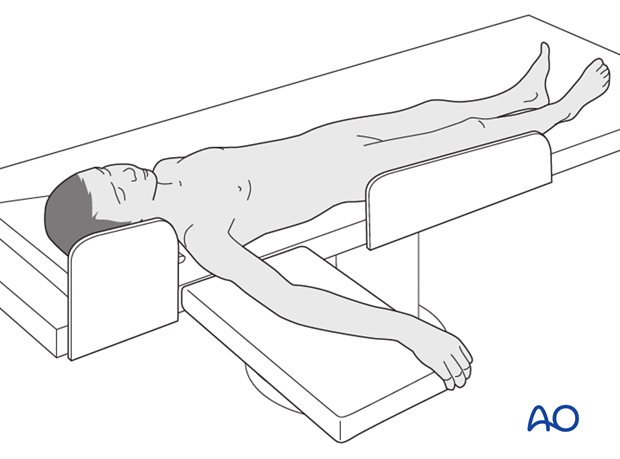
4. Reduction
Reduction and fracture stability in children
Children’s periosteum is thick, tough tissue and is often intact on the concave (compression) side of a fracture.
Reduction maneuvers should be gentle to take advantage of stability of an intact periosteum.
Exaggeration of the fracture deformity may be required to loosen the periosteum and allow for gentle reduction.
In pediatric fractures there is often a combination of patterns of bone failure. Residual plastic deformity may prevent anatomical reduction of some of the fracture edges. Provided the alignment of the bone is anatomical and overall reduction is stable it is not necessary to perfectly reduce the entire fracture.
Open reduction
Reduce the fracture without extensive dissection of the fracture zone, using a reduction forceps on each main fragment.
The use of blunt, as opposed to pointed, reduction forceps can be helpful, particularly if greater forces are required.
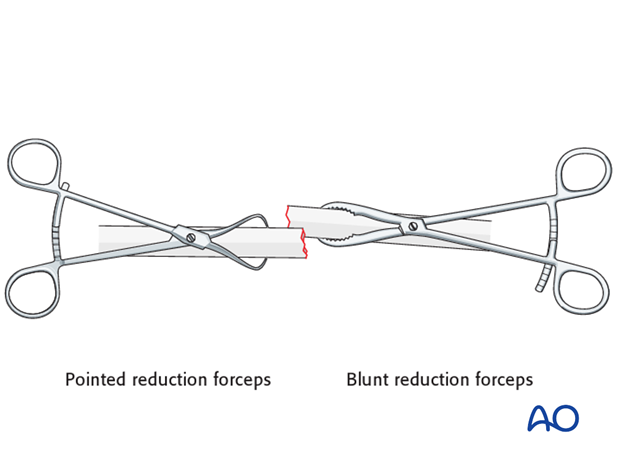
Fix the plate to one fragment and then reduce the other main fragment onto the plate maintaining length, alignment and rotation.
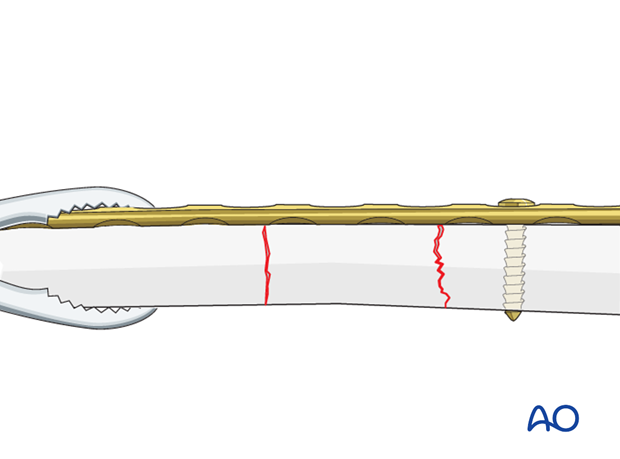
Plate assisted reduction and distraction using a laminar spreader and a screw (push-pull technique)
The plate is fixed to the proximal main fragment using a standard screw though the end hole.
Check that the rotational alignment is correct.
An independent screw is inserted into the distal main fragment a short distance (1-1.5 cm) beyond the distal end of the plate.
Use a laminar spreader between the independent screw and the end of the plate to distract the fracture, restoring length and axial alignment.
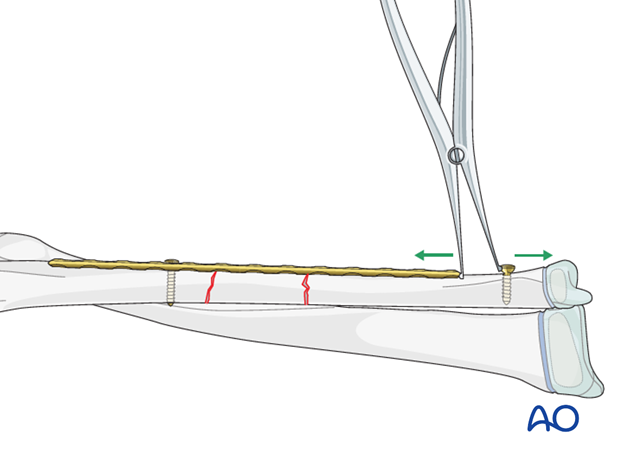
5. Plate length and number of screws
Three bicortical screws are suggested in each main fracture fragment due to the high torsional stresses.
Depending on its size, the intermediate fragment(s) may be fixed with bicortical screws or spanned by the plate, remembering that bridge plating is to achieve relative stability.

6. Fixation
Insertion of 1st screw
Align a suitable plate to the bone, keeping in mind the shape of the yet unreduced fracture fragment.
Insert a neutral screw through the plate into one of the main fragments near the fracture line.
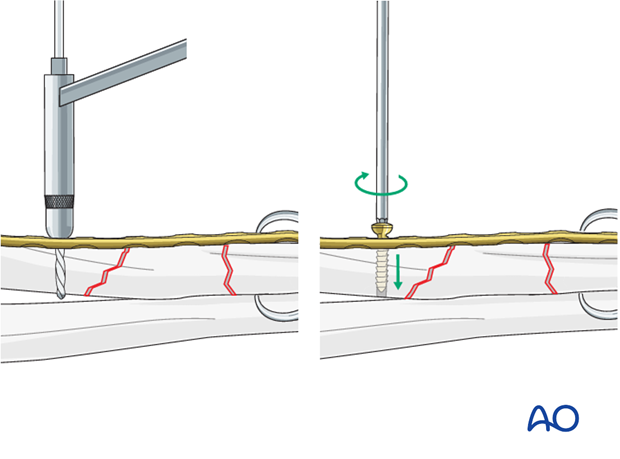
Insertion of 2nd screw
Insert a screw through the plate onto the other main fragment.
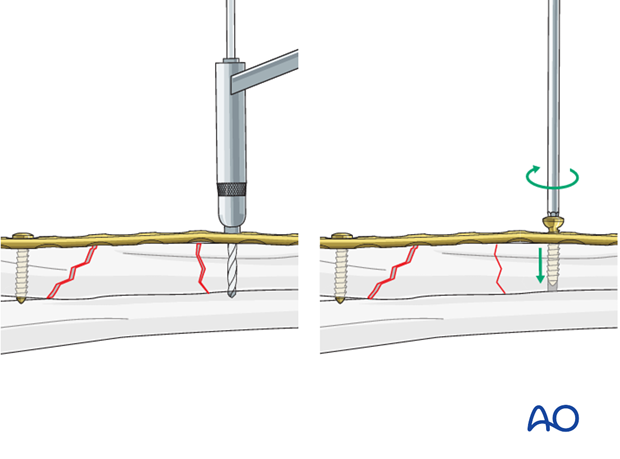
Optional: Fixation of intermediate fragment(s)
Secure the intermediate fragment(s) to the plate with a screw(s) if appropriate.

Completed osteosynthesis
Before inserting additional screws check reduction of the fracture and rotation of the forearm.
Insert the remaining screws.

7. Final assessment
Check the completed osteosynthesis with image intensification. These images should be retained for documentation or alternatively an x-ray should be obtained before discharge.
Make sure that the plate is at the correct location, the screws are of appropriate length and the desired reduction has been achieved.
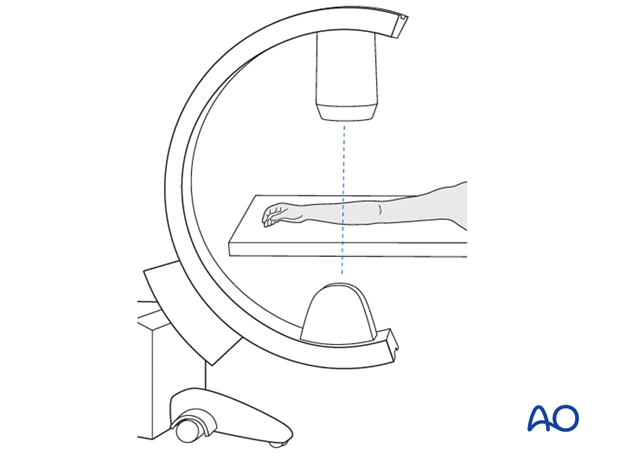
Stabilize the elbow at the epicondyles and check the forearm rotation.

8. Aftercare following plating
Immediate postoperative care
Whilst the child remains in bed, the forearm should be elevated on pillows to reduce swelling and pain.

Casting or Splinting
Plate fixation of forearm fractures is intrinsically stable and supplementary casting or splinting is therefore not required.
Some surgeons prefer a long or short splint for 2-3 weeks postoperatively for comfort.
Analgesia
Ibuprofen and paracetamol should be administered regularly during the first 4-5 days of injury, with additional oral narcotic medication for breakthrough pain.
If the level of pain is increasing the child should be examined.
Neurovascular examination
The child should be examined regularly, to ensure finger range of motion is comfortable and adequate.
Neurological and vascular examination should also be performed.
Compartment syndrome should be considered in the presence of increasing pain, especially pain on passive stretching of muscles, decreasing range of active finger motion or deteriorating neurovascular signs, which are a late phenomenon.
See also the additional material on postoperative infection.
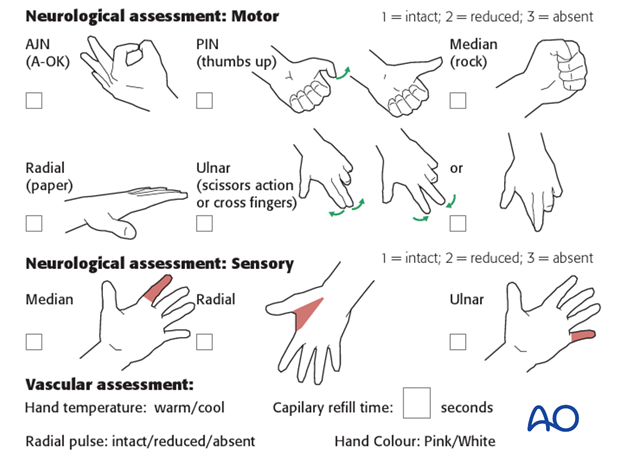
Compartment syndrome
Compartment syndrome is a possible early postoperative complication that may be difficult to diagnose in younger children.
The presence of full passive or active finger extension, without discomfort, excludes muscle compartment ischemia.
If there are signs of a compartment syndrome:
- If the child is in a cast, split the cast, along its full length down to skin level.
- Elevate the limb.
- Encourage active finger movement.
- Reexamine the child after 30 min.
If a definitive diagnosis of compartment syndrome is made, then a fasciotomy should be performed without delay.
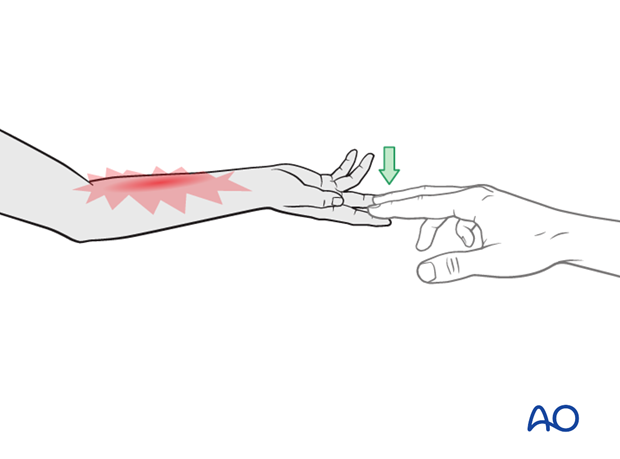
Discharge care
Discharge from hospital follows local practice and is usually possible after 1-3 days.
The parent/carer should be taught how to assess the limb.
They should also be advised to return if there is increased pain or decreased range of finger movement.
It is important to provide parents with the following additional information:
- The warning signs of compartment syndrome, circulatory problems and neurological deterioration
- Hospital telephone number
- Information brochure
For the first few days, the elbow and forearm can be elevated on a pillow, until swelling decreases and comfort returns.
The arm can be placed in a sling for a few days until the patient is pain free. Many children are more comfortable without support.
Mobilization
Early movement of the forearm should be encouraged as soon as the patient is pain free.
Formal physiotherapy is normally not indicated, but children should have a sheet of exercises to stimulate mobilization.
Follow-up
The first clinical and radiological follow-up depends on the age of the child and is usually undertaken 4 weeks postoperatively.
At this point, the child should be able to move the forearm almost fully.
AP and lateral x-rays are required.
See also the additional material on healing times.
Plate removal
Plate removal is delayed for at least 6 months.
An asymptomatic plate that does not interfere with forearm rotation can be left in place minimizing complications associated with implant removal.













